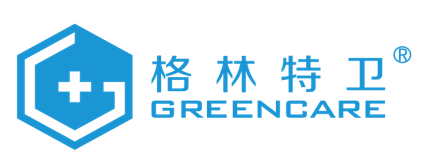1. The Importance of protective clothing manufacturers in Ensuring Workplace Safety
Protective clothing is a crucial component in ensuring the safety and well-being of workers in hazardous environments. Manufacturers of protective clothing play a vital role in producing high-quality and specialized garments that protect individuals from various workplace hazards. From chemical spills to fire incidents, protective clothing offers an additional layer of protection, reducing the risk of injuries and accidents.
2. Understanding the Role of Protective Clothing Manufacturers
Protective clothing manufacturers are responsible for designing, developing, and producing garments that meet industry standards and regulations. They work closely with experts in the field to identify potential workplace hazards and create clothing solutions that address these risks effectively. By utilizing advanced materials and innovative technologies, manufacturers ensure that workers have access to reliable and durable protective clothing.
3. The Process of Manufacturing Protective Clothing
The manufacturing process of protective clothing involves several stages, starting from research and design to production and quality control. Manufacturers conduct extensive research to understand the specific needs and requirements of different industries. This information guides the design phase, where prototypes are created and tested for functionality and comfort. Once approved, the production begins, followed by strict quality control measures to ensure the garments meet the necessary safety standards.
4. Innovative Technologies in Protective Clothing Manufacturing
Protective clothing manufacturers continuously strive to incorporate innovative technologies into their products. These technologies enhance the overall performance and comfort of the garments, making them more effective in safeguarding workers. Some notable advancements include moisture-wicking fabrics, flame-resistant materials, and breathable membranes. These innovations allow for better temperature control, improved mobility, and increased protection against various hazards.
5. The Importance of Standards and Certifications
Standards and certifications are crucial in the protective clothing manufacturing industry. They ensure that the garments meet specific safety requirements and provide reliable protection. Manufacturers adhere to various international standards, such as those set by the National Fire Protection Association (NFPA) and the European Committee for Standardization (CEN). These standards cover aspects like flame resistance, chemical permeation, and electrical insulation, providing customers with confidence in the quality of the protective clothing.
6. Customization and Personalization in Protective Clothing
Protective clothing manufacturers recognize that different industries and job roles have unique safety needs. To cater to these specific requirements, manufacturers offer customization and personalization options. This allows companies to tailor the protective clothing to their employees' needs, ensuring a better fit and optimal protection. Customization options may include sizing, color choices, and the addition of company logos or branding.
7. Sustainability in Protective Clothing Manufacturing
With growing environmental concerns, protective clothing manufacturers are increasingly focusing on sustainability. They strive to minimize the environmental impact of their manufacturing processes by using eco-friendly materials and adopting sustainable practices. This includes reducing waste generation, promoting recycling, and exploring alternative energy sources. Manufacturers are also investing in research and development to create more sustainable protective clothing options without compromising on safety standards.
8. Collaboration with Occupational Safety Experts
Protective clothing manufacturers work closely with occupational safety experts to gain insights into emerging risks and industry trends. This collaboration ensures that manufacturers stay up-to-date with the latest safety requirements and develop innovative solutions accordingly. By partnering with experts, manufacturers can proactively address potential challenges and provide workers with the most advanced protective clothing options available.
9. The Global Market for Protective Clothing
The global market for protective clothing continues to grow, driven by increasing awareness of workplace safety and stringent regulations. Protective clothing manufacturers play a crucial role in meeting this growing demand by offering a wide range of protective garments suitable for various industries and hazard types. The market includes both established manufacturers and emerging players, all striving to provide the highest level of protection to workers worldwide.
10. Future Trends in Protective Clothing Manufacturing
The future of protective clothing manufacturing holds exciting possibilities. As technology continues to advance, manufacturers are exploring opportunities to integrate smart features into their garments. This includes wearable sensors for monitoring vital signs, embedded communication devices, and self-cleaning fabrics. These advancements have the potential to revolutionize workplace safety, making protective clothing even more effective and efficient in mitigating risks.

